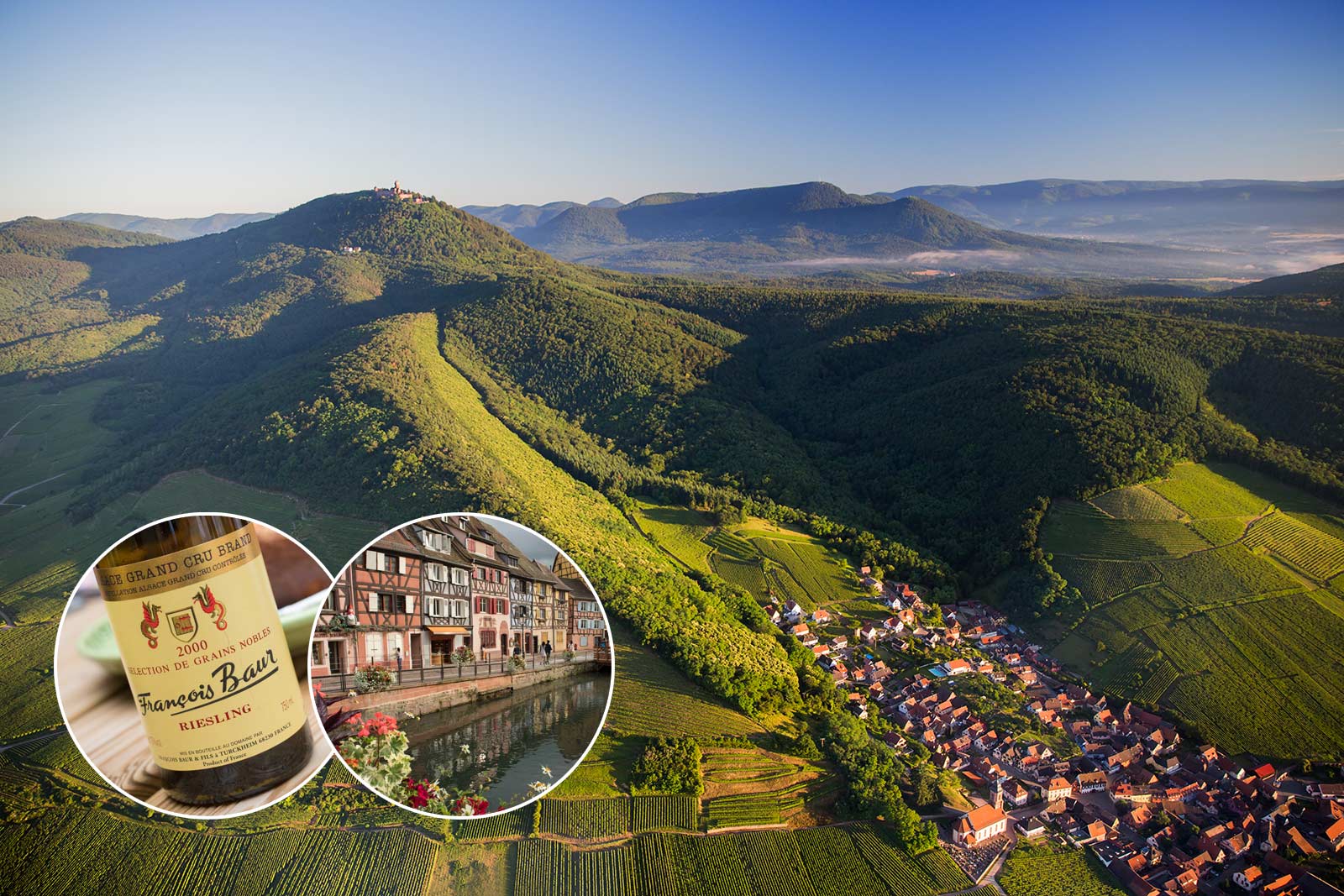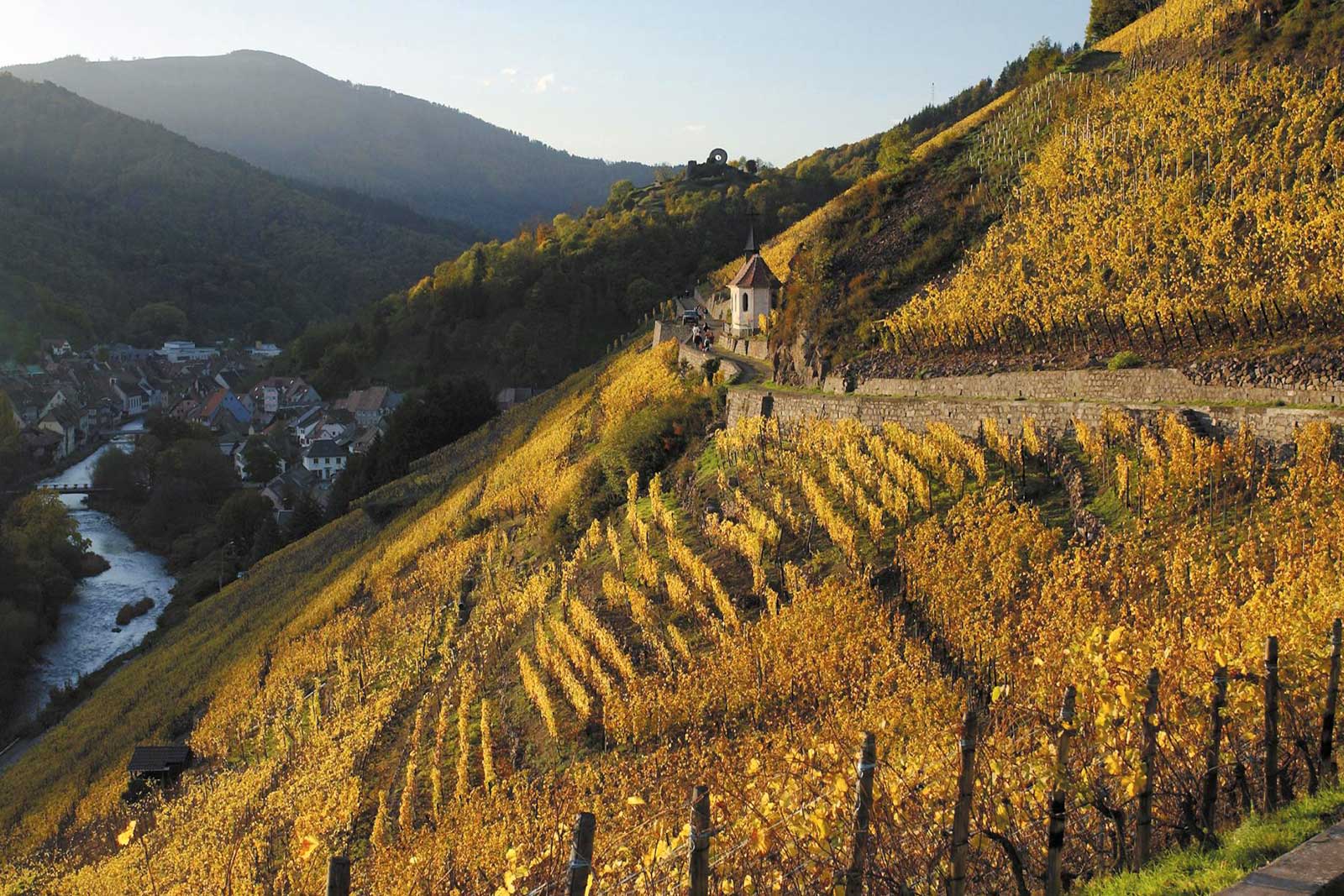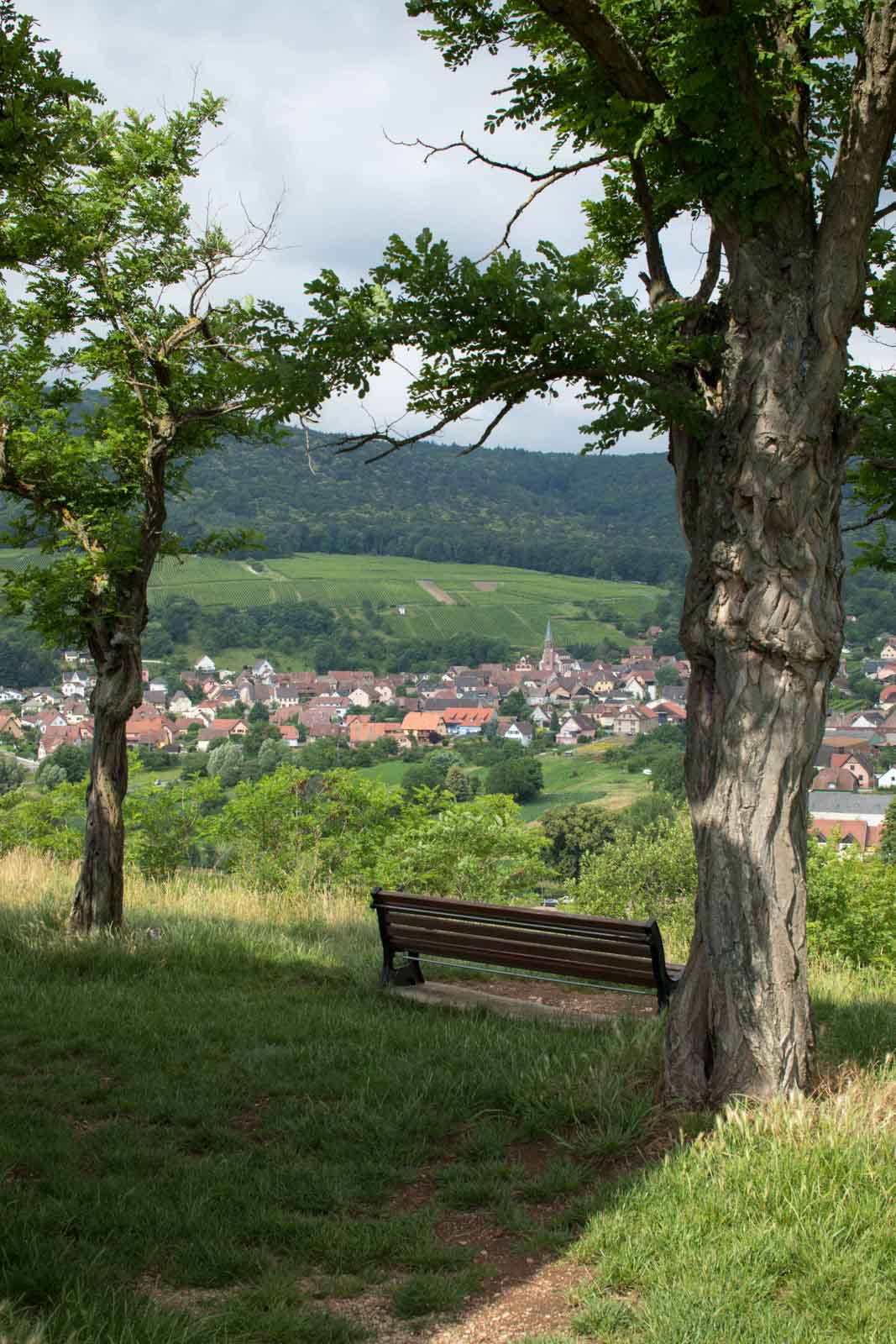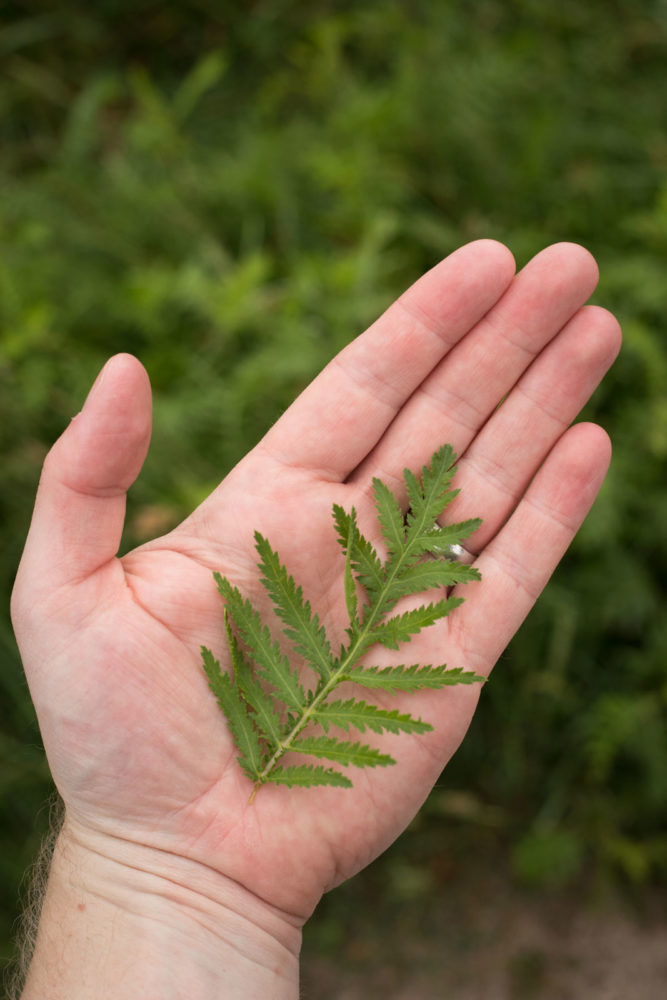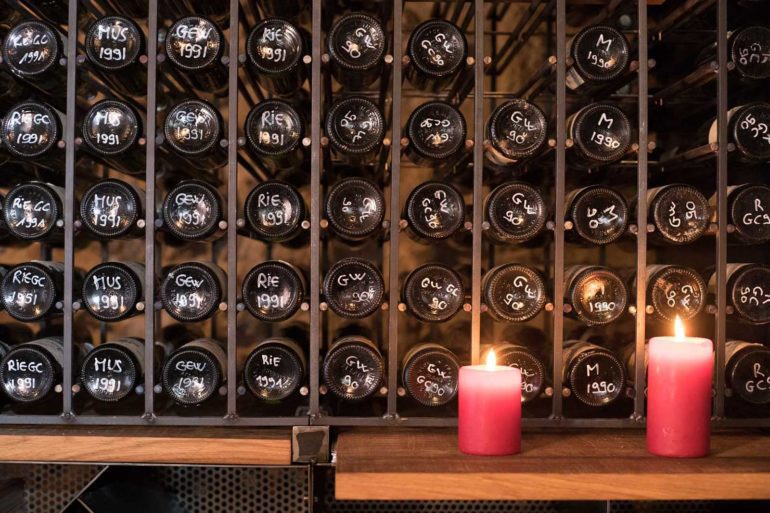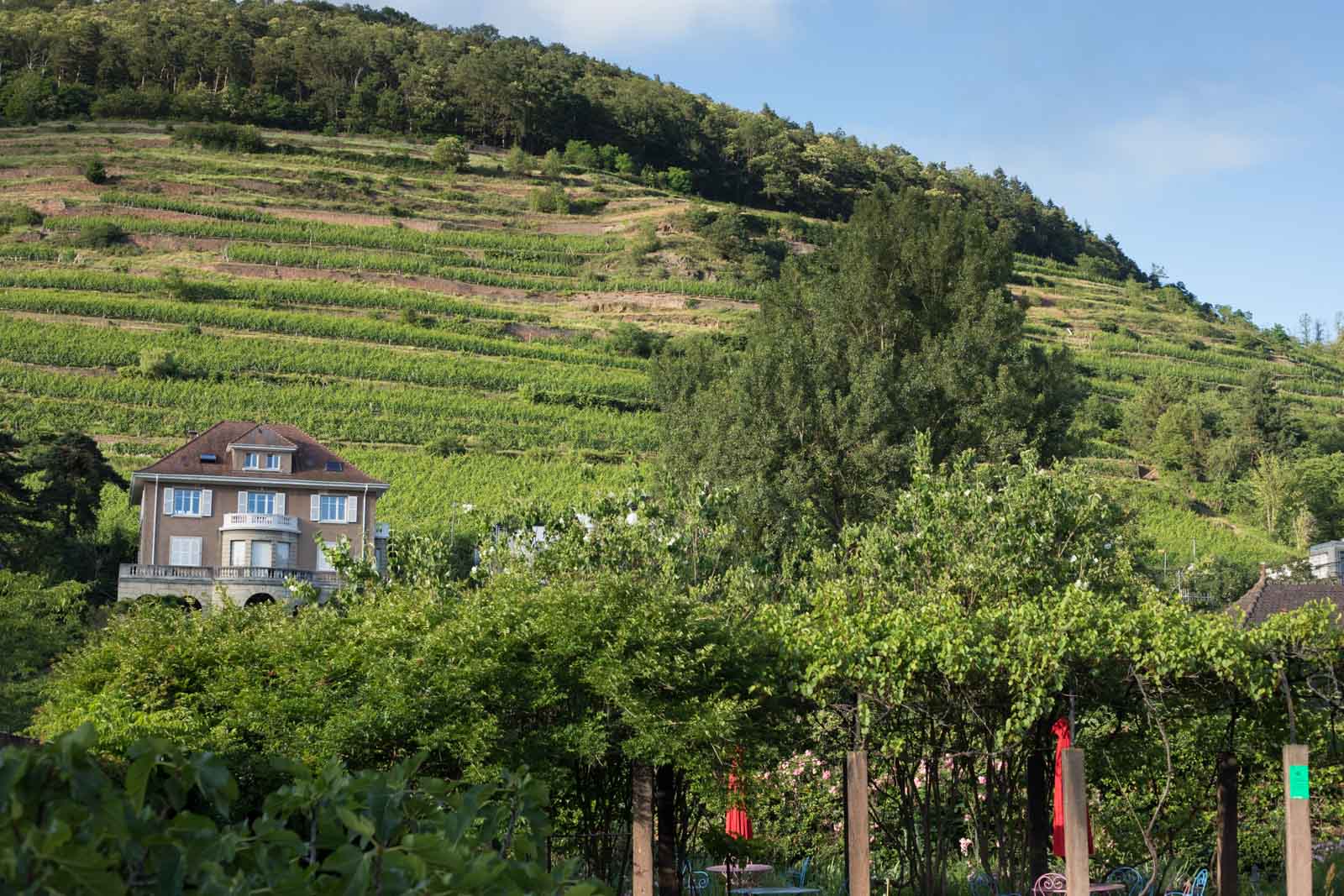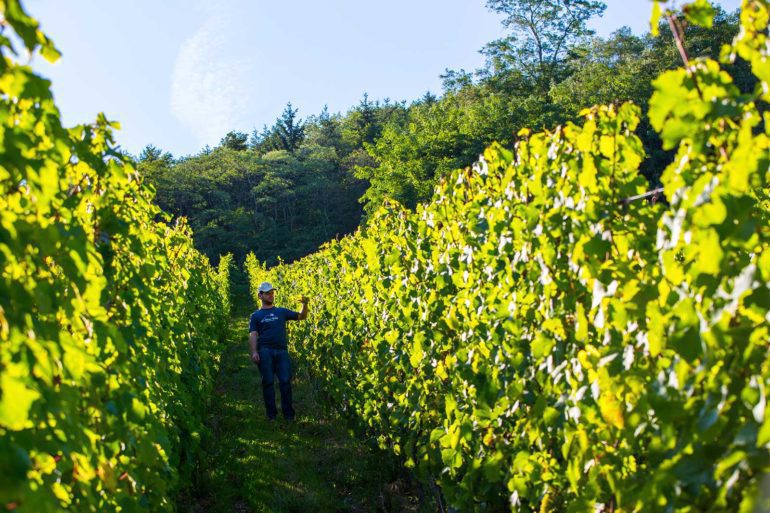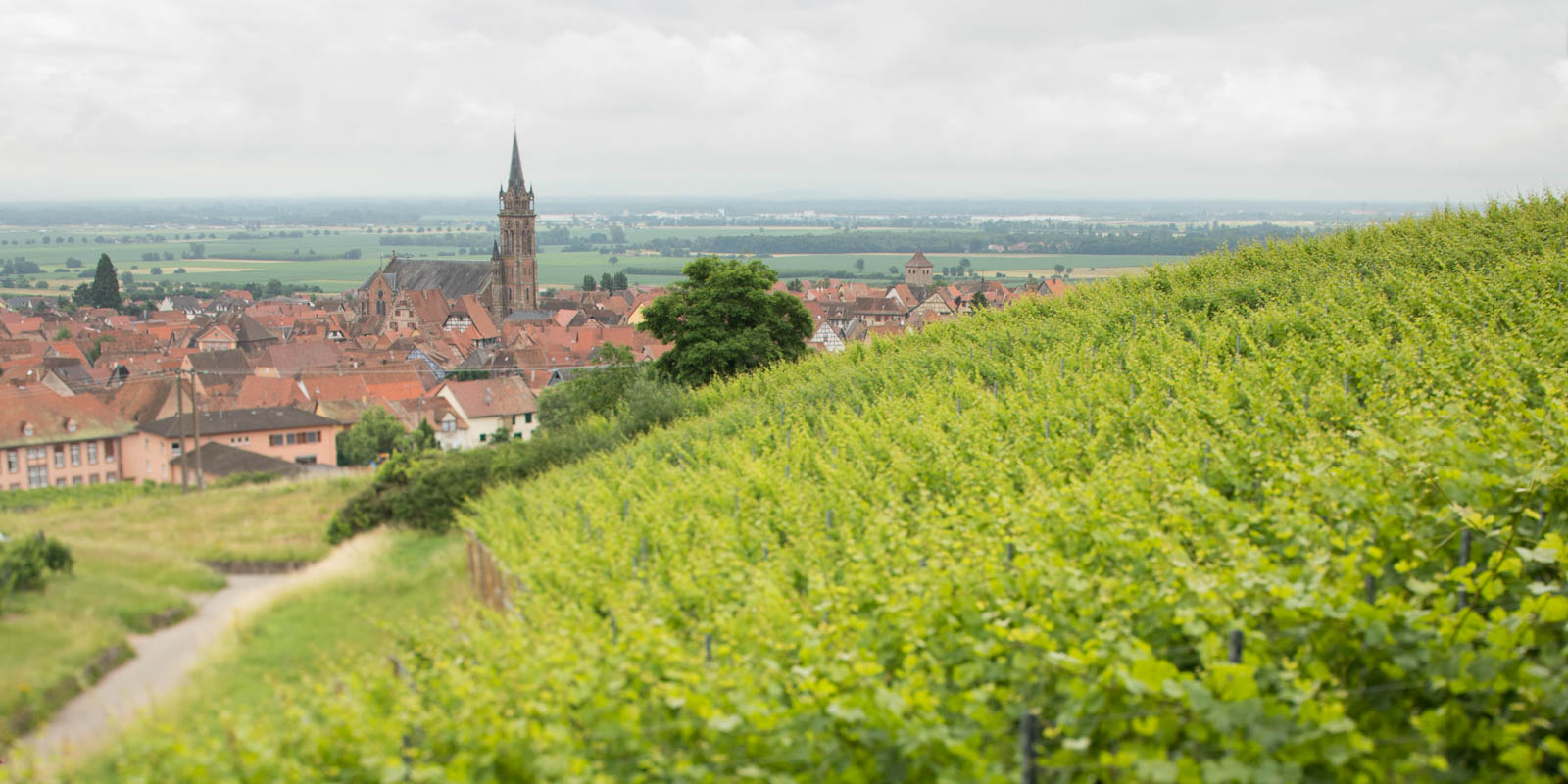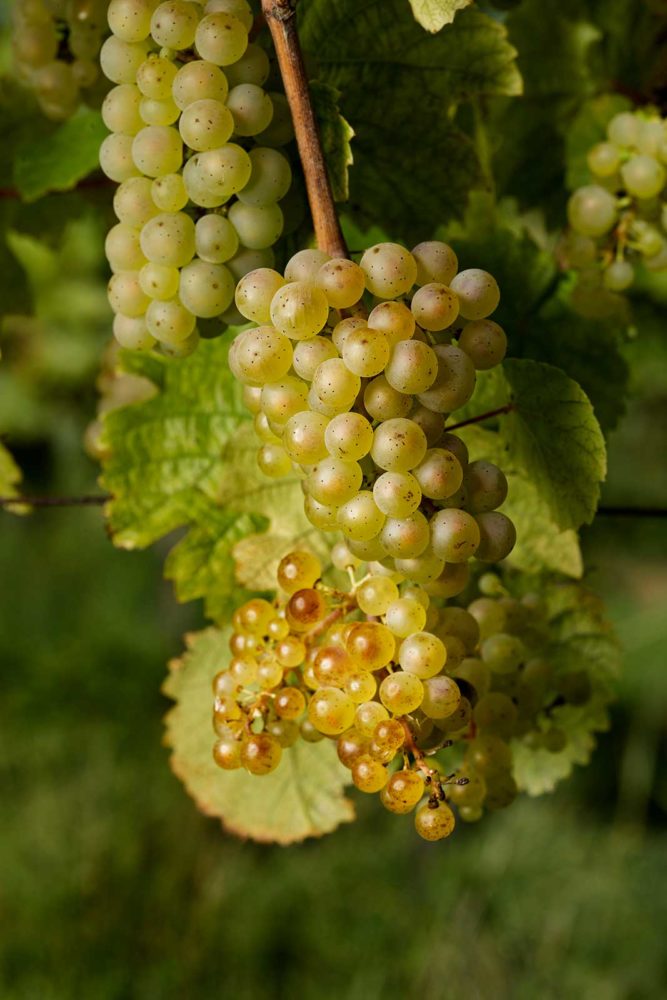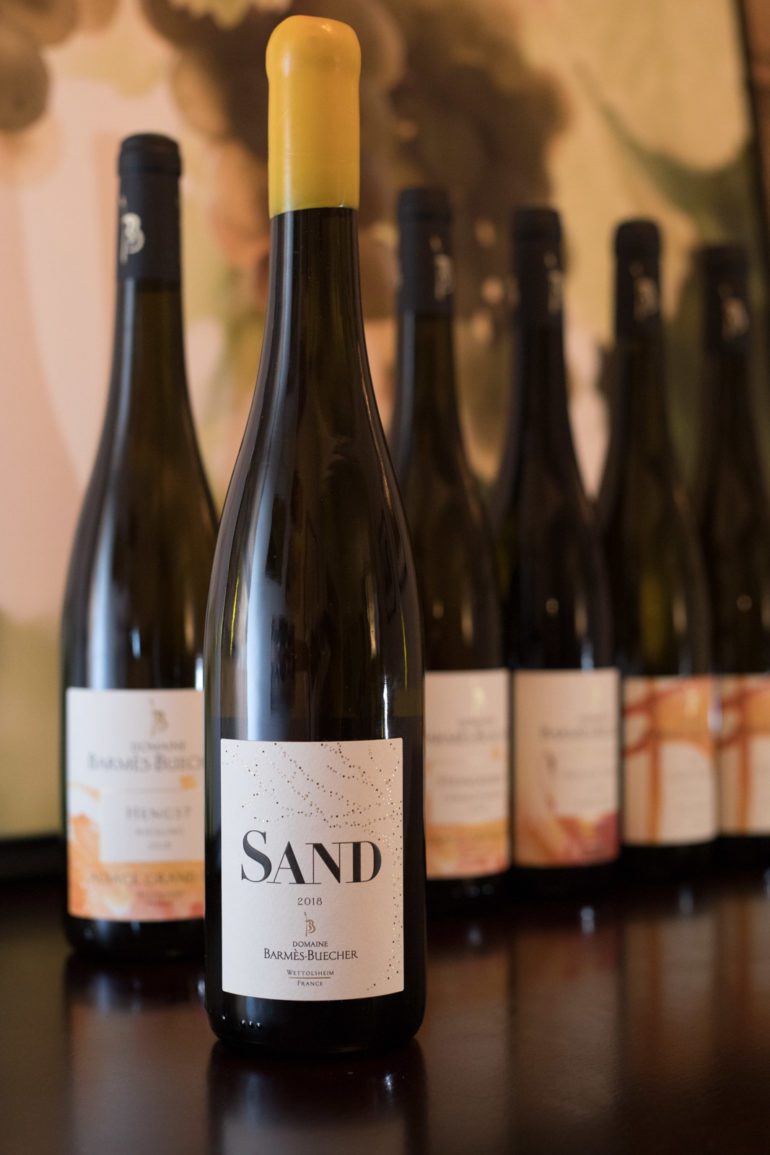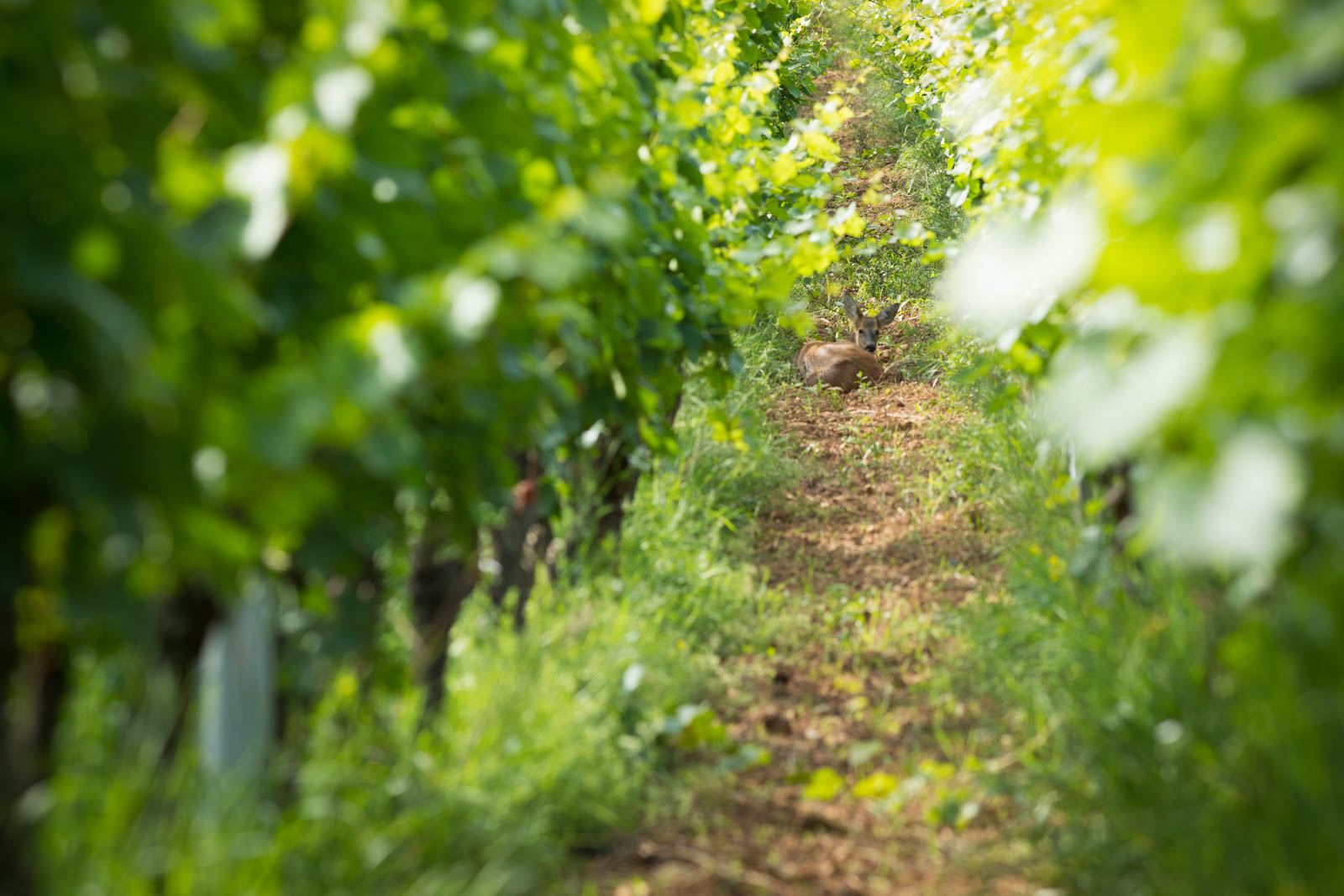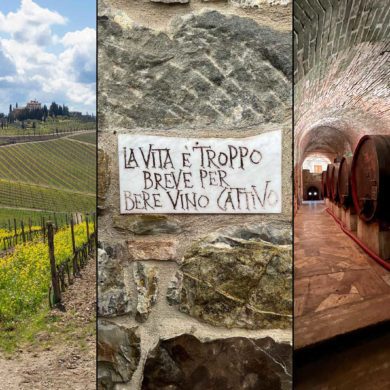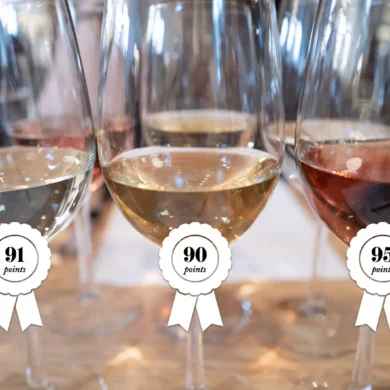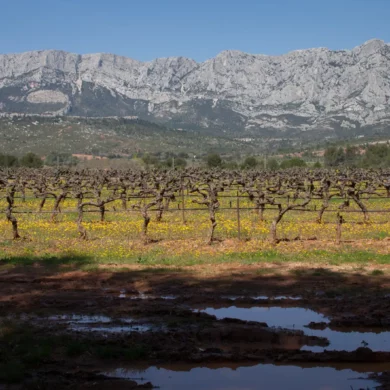Situated on the western side of the Rhine River and entirely within France, Alsace is not like any other wine region in Europe. Some of this has to do with the Vosge Mountains and their rain shadow, which makes Alsace the sunniest place in France, a climate conducive to full-bodied Riesling. Then there is the complex geology, which fosters bright and mineral Pinot Gris and Pinot Blanc. But much of what makes Alsace so unique is its culture: the Alsatian people are neither fully French, nor German (their ancestry is traced to Switzerland), but you see shades of it all interwoven into something that is quintessentially its own thing.
On Sunday, May 21 at 8pm EST / 5pm PST, we will visit this fascinating region and explore its unique wines. The session will be an introduction to the various wines of Alsace, a sliver of land between the Vosges Mountains and the Rhine River in Eastern France. Best known for dry Riesling but emerging for sparkling wine and Pinot Noir, this dynamic and sunny region is not only one of the world’s most scenic viticultural areas, but also one of its most fascinating. I can’t wait to share this journey with you.
As we work our way across this landscape, we will pause to taste, compare and discuss two different wines: a Pinot Gris and a Riesling. If you’d like to simply enjoy a carefree wine of excellent value and character, I’d recommend a Crémant d’Alsace instead. Wine obsessives are welcome to embark on a quest for the “next big thing,” Alsatian Pinot Noir.
Filled with photographs, maps and consumer-friendly insights on wine, this high-end presentation is one you won’t want to miss if you love French wine. Below you will find the Zoom credentials as well as a Buyer’s Cheat Sheet on buying the wines.
Navigate This Study Guide
Zoom Credentials
Topic: The Charms of Alsace and Its Wines
Time: May 21, 2023 8pm Eastern Time / 5pm Pacific Time (US and Canada)
Meeting ID: 828 3933 7520
Passcode: Alsace2023
Buyer’s Guide to Alsatian Wine
Plan on a budget of between $45–$105 for the two wines. Also, plan on having to do some hunting. Alsace has a small footprint in the American wine market, and you may need to order some wines online. I have a few Wine.com links set aside for that (see below, I get no commission), but it is time-sensitive due to inventory and shipping. The earlier you order, the better.
Unlike much of France, Alsace prefers to label its wines by grape variety as well as place. The main appellation here is the Alsace AOC. On the label, you won’t find any hard-to-pronounce villages that must be triangulated with a certain grape to memorize here (e.g. “Ahh, a bottle of Hunawihr. That I know from my wine studies is a Riesling…” None of that).
However, they do embrace a Grand Cru system (so French!) for rating the best vineyards. These wines cost more, but I’ve stomped through a few of these vineyards and tasted verticals: they really yield superior wines, so don’t pass up the chance to buy one if it is within your budget.
One more thing to know: every now and then, an Alsace producer will create an off-dry or even sweet wine and it won’t be clearly labeled on the front. They are adopting a scale of sweetness (1 through 5, with 1 being driest) but this is just another coded, in-the-know tactic for insiders to memorize. It’s fairly annoying frankly.
If you see Vendages Tardives on the label, that means “late harvest” and it will be sweet. If it says “Selection Grains Nobles,” that means it has been influenced by noble rot and it will be sweet and gingery (think Sauternes … these wines can be epic, but they’re not typically for pairing with dinner).
Simply put, if you are shopping in person at a bottle shop, ask them if the wine is dry to confirm. That’s not to say that the dry wines are always better — some of the greatest wines I’ve ever tasted as sweet dessert wines from Alsace — but for purposes of this tasting, and to avoid surprises, it’s best to ask.
Grand Cru Vineyards
There is no formal ranking of the Grand Cru vineyards, but some carry a larger reputation than others. Rather than overwhelm you with slide upon slide on this Grand Cru and that Grand Cru (there are 51 of them, afterall), I’d like to just focus on the following four Grand Cru vineyards and what makes them unique. This is a primer for discovering the depth and idiosyncrasies of Alsatian wine. Or, if you plan to visit Alsace, this will enhance your itinerary. Being able to walk among the Grand Cru is an indelible experience!
If you are able to buy a wine from one of these vineyards, bonus points for you! You’ll be able to hear their story while you taste:
- Grand Cru Rangen de Thann
- Grand Cru Brand
- Grand Cru Wineck-Schlossberg
- Grand Cru Hengst
Pinot Gris
Yes, this is the same grape as that cheap Pinot Grigio you might avoid at the entrance to your local liquor store. Like coffee beans, there is great Pinot Gris/Pinot Grigio and there is terrible Pinot Gris/Pinot Grigio. (We won’t be drinking Folgers with us on the 21st!) Alsace specializes in some of the finest versions of Pinot Gris in the world. What makes Alsace’s Pinot Gris so special? The sheer variety, which is attributed to Alsace’s astoundingly diverse soil types. Pinot Gris tells a lot of different stories in Alsace … too many to tell in one night, but we’ll give it a try.
Recommended: Domaine Emile Beyer Pinot Gris Tradition ($27.99) or Ostertag “Les Jardins” Pinot Gris ($40.99)
Riesling
Alsace’s King. For those of you who associate Riesling with sweetness or general unpleasantness, I hope you can find a new interpretation in this night’s tasting. For decades, Riesling’s reputation languished because of ultra-sweet German renditions that defined the genre worldwide. But dry Riesling — and yes, even off-dry and sweet Riesling under the right conditions and care — can be one of the world’s finest white wines. Alsace is particularly known for them. What makes them so great? Well, we will explore that in fuller detail during the session, but they have a richness without being fatiguing to the tastebuds, they have aromatic complexity that changes and changes and changes over an entire night, and they have the potential to age for decades — a rare trait in white wines! All of this ladders up to a thrilling experience. The producers listed below all make great Riesling, so go off of that if you can. I’m confident that you’ll at least get to settle once and for all where you stand on Riesling.
Recommended: Domaine Emile Beyer Riesling Tradition ($22.99) or Domaine Weinbach Cuvée Theo Riesling ($45.99)
Sidenote:
What to look for in both Pinot Gris and Riesling:
- If the wine simply says PRODUCER + ALSACE + PINOT GRIS/RIESLING it is likely a blend from multiple plots around the area or around a particular slice of Alsace. These are usually the most affordable wines.
- If the wine has a NAME (e.g. “Cuvee H” or “Les Jardins”) + ALSACE + PINOT GRIS/RIESLING this wine is probably a step up because the winemaker has either (a) blended grapes from specific plots to achieve a very specific profile or (b) it comes from a named vineyard that is not a Grand Cru.
- If the wine has GRAND CRU ______ + ALSACE + PINOT GRIS/RIESLING, then you have found a wine at the pinnacle of Alsace’s pyramid. Supposedly. There are 51 Grand Cru vineyards in Alsace (some say that is too many), and they have both historic and geologic traits that make them unique to wine. Some of the most famous are Rangen de Thann, Rosacker, Brand, Hengst, Muenchberg, Steingrubler and Wineck-Schlossberg. These wines are also more carefully regulated, and they represent the most detail and complexity of what Alsace has to offer.
- There are a few microplots within a Grand Cru that have made a name for themselves in their own right, none more famous than Zind-Humbrecht’s Clos Saint-Urbain in the Rangen de Thann, and Trimbach’s Clos Ste. Hune in the Rosacker. These are often the most coveted and priciest wines in Alsace. Clos Saint-Urbain is one of the most photographed vineyards in the world. It is drop-dead gorgeous (and I’ll tell its unique tale during our session).
Other Wines
If you’d like a third wine — or if this class piques your interesting in Alsatian wine and you are looking for a next step — it is good to also know about:
Crémant d’Alsace
If you just want one carefree bottle for the night, skip the Riesling and Pinot Gris and open a Crémant. Alsace’s sparkling wine is made in bottle, just like Champagne, but it has a wider range of grapes that can be used, including Riesling. These are great brunch wines: even better than swill-em-n-forget-em Prosecco. They are also a little easier to find, and so I imagine that for those of you who are able to snag a third wine in time for this tasting, it will likely be a Crémant d’Alsace.
Recommended: Domaine Barmes-Buecher Crémant d’Alsace
Pinot Noir
Alsace’s reputation for Pinot Noir is still a moving target as this is the beginning of a renaissance. The region was once known for red wines (Middle Ages), they fell out of favor, then the climate was just too consistently cold to sustain them. Now that it is warming rapidly, red wines are back on the table, and they’re fantastic. The problem: they are rare! For the most devoted “early bird” guests of this session, I encourage you to shop around online and see if you can get a few Alsatian Pinot Noir for this tasting. Give yourself two weeks to allow for shipping, and if they arrive after the tasting, so be it. They’re worth the exploration, as this is a leaner, savory and sometimes smokier version of the beloved grape.
Sylvaner
I won’t spend much time on Sylvaner, but there are a few versions from Alsace on the market, and they can be quite quenching and fun.
Gewurztraminer
Gewurztraminer is the oddest duck in the wine kingdom. An acquired taste if ever there was one. High in alcohol, and loaded with intense aromas reminiscent of tropical fruit and roses, it can be a bit fatiguing. In Alsace, you can find off-dry and sweet versions, which actually work brilliantly with the local cuisine; but they’re not often exported to the United States. Gewurztraminer can be planted in Grand Cru vineyards, so the wine industry there has a lot of respect for this grape. It can be a third option if you find one and you are curious. Up to you.
Top Producers
- Domaine Zind-Humbrecht – In its 11th generation, this storied house is lead by one of the wine world’s most knowledgeable and fascinating winemakers, Olivier Humbrecht, one of the only winemakers in the world to earn the title of Master of Wine. Their wines from the Clos Saint-Urbain in the Grand Cru Rangen de Thann are widely considered to be among the top 10 wines in all of France.
- Barmès-Buecher – A small, biodynamic family domaine run by a brother-sister duo, who took over for their talented father after he tragically died in a cycling accident. Their Riesling is very distinctive. A personal favorite.
- Domaine Albert Mann – Superb Riesling? Check. Excellent Pinot Gris? Check. Biodynamic and organic practices? Check. Domaine Albert Mann does a lot of things right, but what they’re best known for is their Pinot Noir. No other estate has put as much effort and attention into red wine in Alsace. Anything from them is worth picking up.
- Domaine Weinbach – Widely respected and widely available. Their Riesling wines can be wonderfully potent and precise. This is also one of the oldest continuously operated wineries in Alsace (as their label vibe-checks clearly).
- Albert Boxler – Well regarded Niedermorschwihr-based family winery with roots in the area dating back to 1673. Their Crémant d’Alsace rivals most champagne and can be purchased for half the price.
- François Baur – Makers of finely detailed and mineral Riesling from the Grand Cru Brand. Also worth seeking out for their Pinot Noir, and their Selection Grands Noble Riesling (infused with noble rot character) is to die for.
- Camille Braun – Like Domaine Albert Mann, they check all the boxes for fresh, expressive Riesling and Pinot Gris. But it is their work with Crémant d’Alsace (sparkling wine) that really caught my attention in Alsace.
- Ostertag – Iconoclast producer with a vividly expressive portfolio. Biodynamic and very vocal about environmental issues in the area.
- Meyer-Fonné – Very precise and carefully made wines. Félix Meyer is a very meticulous winemaker. Look for their Pinot Noir if you can — it rivals Albert Mann.
- Josmeyer – Run by two sisters, this storied family estate has a wide ranging line of brilliant wines.
- Léon Beyer – Wild and already aged, Léon Beyer’s wines are unlike anything else I tasted in Alsace. Very old school in their approach.
- Marcel Deiss – Alsace’s most divisive figure, who prefers to make field blends (co-planting and co-fermenting multiple grapes from the same plot) into wild, hard-to-pin-down blends. Deiss does have a few varietal wines which are a safe bet for this class, but the field blends are “love ‘em or leave ‘em.” Still, worth noting because his work is so distinctive.
If you cannot find a wine from this set of producers, no worries. Other noteworthy producers to seek out include:
- Hugel – Most widely available Alsace producer.
- Trimbach – Also widely available. Has a few highly prized Grand Cru Riesling
- Domaine Schoffit
- Valentin Zusslin
- Pierre Sparr
- Charles Baur
- Pierre Meyer
- Domaine Joseph Cattin
- Domaine Maurice Schoech
- Muré
- Gustav Lorentz
Photo credits:
Featured image: ©Vins d’Alsace (CIVA)
All side bar images are ©Kevin Day/Opening a Bottle with the exception of the Grand Cru Rangen de Thann (stock photo) at the top and the Riesling grape cluster, which is ©Vins d’Alsace (CIVA).
